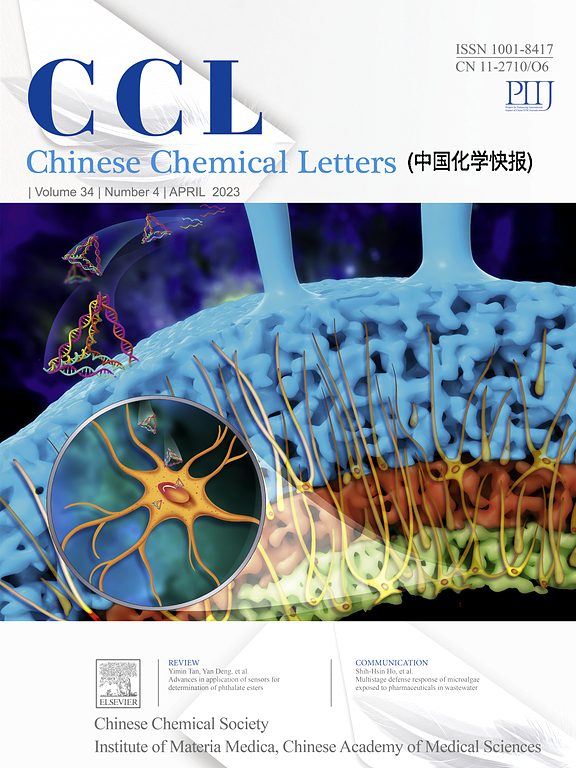石墨烯负载的分离铂原子和铂二聚体用于CO2加氢:催化活性和选择性变化
IF 9.4
1区 化学
Q1 CHEMISTRY, MULTIDISCIPLINARY
引用次数: 0
摘要
操纵催化剂结构来控制产物的选择性,同时保持高活性是二氧化碳加氢研究的一个相当大的挑战。结合密度泛函理论计算和微动力学分析,我们提出石墨烯支持的分离Pt原子(Pt1/石墨烯)和Pt2二聚体(Pt2/石墨烯)在CO2加氢中表现出明显的选择性。Pt1/石墨烯有利于CO2转化为甲酸,而Pt2/石墨烯有利于甲醇的生成。产物选择性的变化是由于Pt2二聚体的协同作用,促进了H原子在两个Pt原子之间的迁移,促进了从*COOH中间体到*C(OH)2中间体的转化,与分离的Pt原子相比,改变了反应途径。此外,对三种Pt1/石墨烯和三种Pt2/石墨烯结构的催化活性分析表明,Pt1ii/石墨烯上生成甲酸和Pt2i/石墨烯上生成甲醇的周转频率分别高达744.48 h-1和789.48 h-1。在相同条件下,这些值与文献中先前报道的值相当甚至超过。该研究为优化催化剂结构以获得所需的CO2加氢产物提供了有价值的见解本文章由计算机程序翻译,如有差异,请以英文原文为准。

Graphene-supported isolated platinum atoms and platinum dimers for CO2 hydrogenation: Catalytic activity and selectivity variations
Manipulating catalyst structures to control product selectivity while maintaining high activity presents a considerable challenge in CO2 hydrogenation. Combining density functional theory calculations and microkinetic analysis, we proposed that graphene-supported isolated Pt atoms (Pt1/graphene) and Pt2 dimers (Pt2/graphene) exhibited distinct selectivity in CO2 hydrogenation. Pt1/graphene facilitated the conversion of CO2 into formic acid, whereas Pt2/graphene favored methanol generation. The variation in product selectivity arose from the synergistic interaction of Pt2 dimers, which facilitated the migration of H atoms between two Pt atoms and promoted the transformation from *COOH intermediates to *C(OH)2 intermediates, altering the reaction pathways compared to isolated Pt atoms. Additionally, an analysis of the catalytic activities of three Pt1/graphene and three Pt2/graphene structures revealed that the turnover frequencies for formic acid generation on Pt1ii/graphene and methanol generation on Pt2i/graphene were as high as 744.48 h-1 and 789.48 h-1, respectively. These values rivaled or even surpassed those previously reported in the literature under identical conditions. This study provides valuable insights into optimizing catalyst structures to achieve desired products in CO2 hydrogenation
求助全文
通过发布文献求助,成功后即可免费获取论文全文。
去求助
来源期刊

Chinese Chemical Letters
化学-化学综合
CiteScore
14.10
自引率
15.40%
发文量
8969
审稿时长
1.6 months
期刊介绍:
Chinese Chemical Letters (CCL) (ISSN 1001-8417) was founded in July 1990. The journal publishes preliminary accounts in the whole field of chemistry, including inorganic chemistry, organic chemistry, analytical chemistry, physical chemistry, polymer chemistry, applied chemistry, etc.Chinese Chemical Letters does not accept articles previously published or scheduled to be published. To verify originality, your article may be checked by the originality detection service CrossCheck.
 求助内容:
求助内容: 应助结果提醒方式:
应助结果提醒方式:


